Edited by Beth on March 9, 2021, 7:39 am Edit: According to the notarised documents from the time the Cullinan was cut the 96 small diamonds weighed 7 and three eights of a carat, which is another reason why I feel that the 96 small diamonds did not provide all the diamonds for the settings of the Cullinan V and Cullinan VIII brooches. Edit 2. I forgot to comment on Dave's query about the original ownership of the Cullinans.
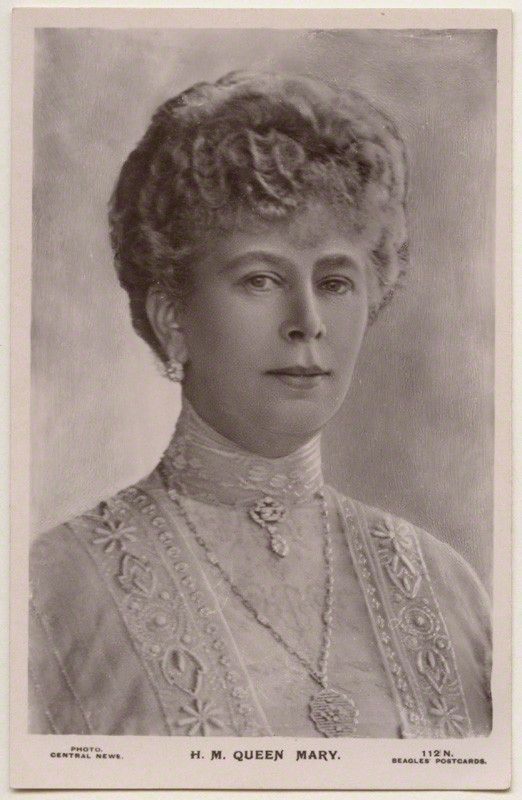
Leslie Field certainly says this, but contrary to what Boffer has written, Hugh Roberts does not.
In his notes published on the Royal Jewels Lists board, Boffer said that Queen Mary wore the necklace "on occasion" and cites H Roberts page 170 as his source. https://royaljewelslists.boardhost.com/viewtopic.php?id=267
[Note: a number of photographs of Queen Mary, Princess Mary, the King and other members of the family were taken on 6 July 1918. On that day the King and Queen hosted a celebratory function for their silver wedding anniversary, as well as undertaking an official carriage drive in London.]
On page 170 of The Queen's Diamonds Roberts uses one of these photos showing Queen Mary seated with Princess Mary beside her.
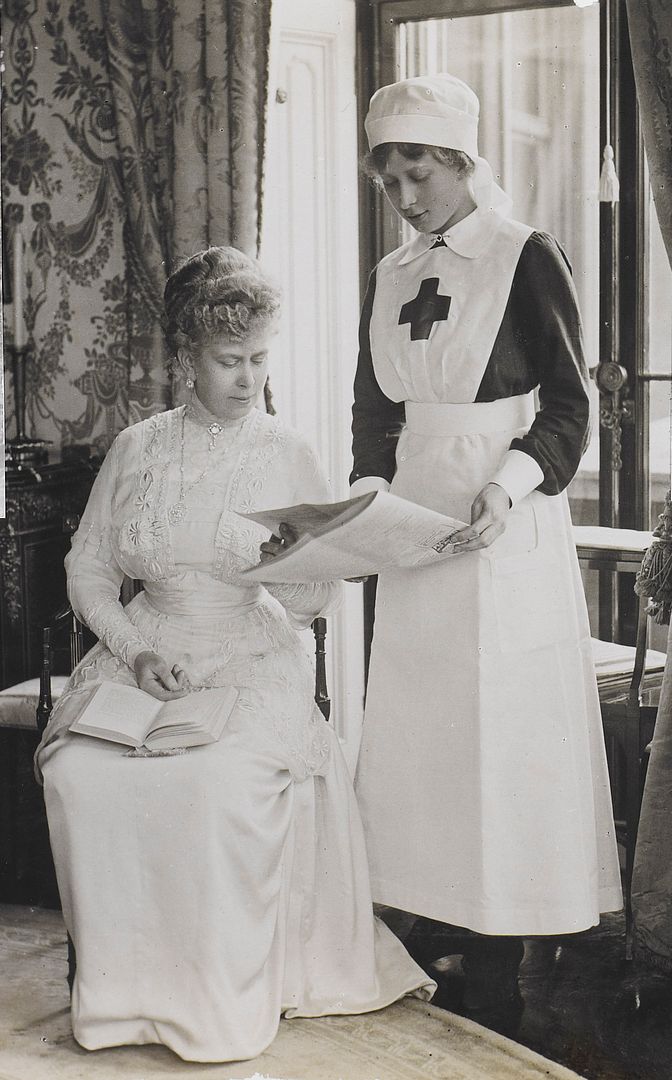
Beside this photo Roberts states--
"Queen Mary wearing the Cullinan VIII Brooch with Cullinan VII (page 174) as pendant in 1918, with her daughter Princess Mary in nursing uniform."
Roberts described the brooch at Queen Mary's throat, not the separate pendant and chain.
an enlarged detail from the photo. 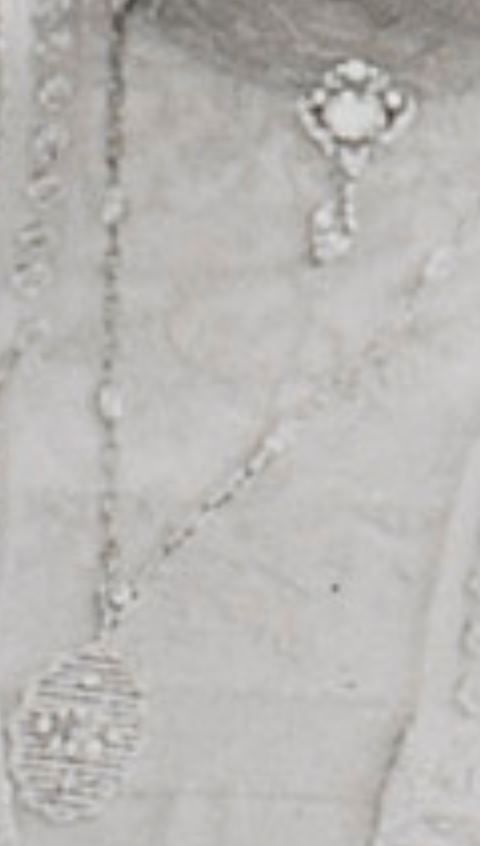
I have never seen any verifiable evidence that this chain and pendant contain diamonds from the cutting of the Cullinan diamond.
Surely, if there were diamonds from the Cullinan in this pendant and chain, Roberts would have said so, as he would have been well aware of Leslie Field's claim.
Commentators constantly point to the fact that, apart from the numbered Cullinans, there were 96 smaller diamonds. Some of these were probably used in making the two brooches which have diamond settings: the Cullinan V brooch which has approximately 54 diamonds and Cullinan VIII which has 35 diamonds. (But we don't know that for certain. A number of the diamonds used in the settings of the Cullinan V and Cullinan VIII brooches are matched for size to complete a balanced design, and I feel that the chances of finding matched pairs (especially in the larger matched pairs) in the 96 smaller diamonds would have been slim, and so it is possibly that other diamonds had to be acquired).
Cullinan V 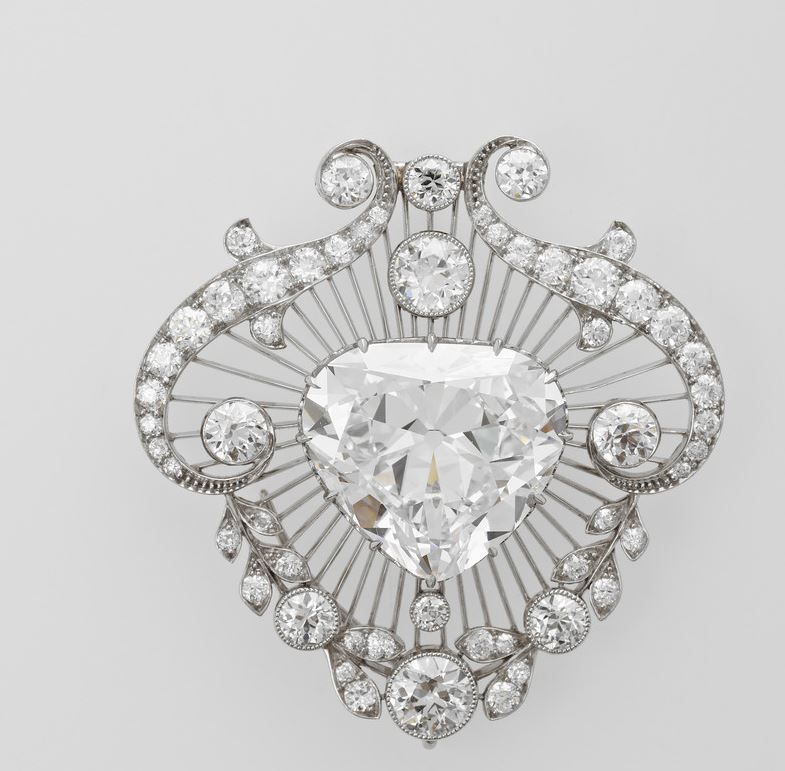
Cullinan VIII with Cullinan VII as a pendant. 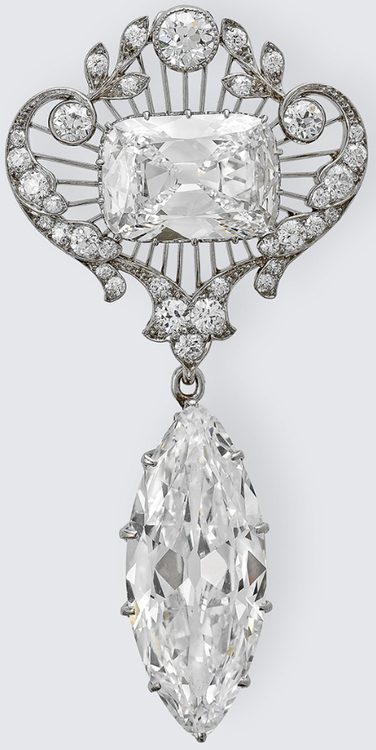
Other commentators argue that this chain and pendant contain the unpolished, left over fragments from cutting the Cullinans.
[Another photo from 6 July 1918. Queen Mary has changed the brooch at her throat] 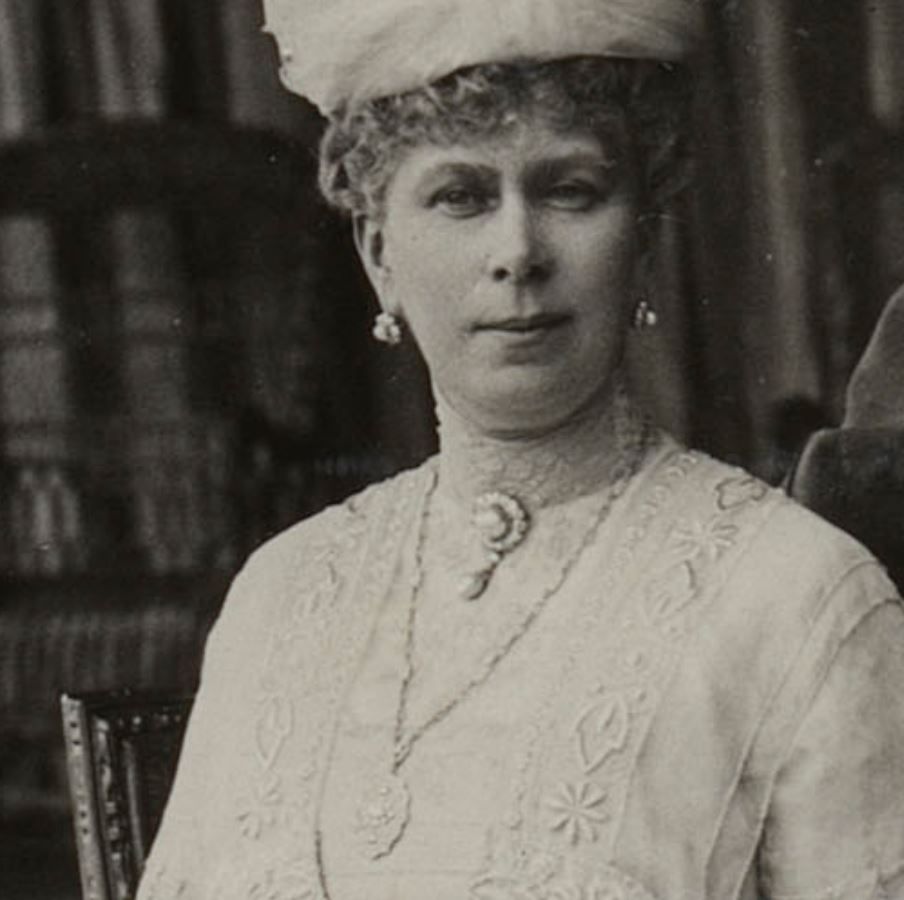
Through the work of the historian Boris Gorelik we now know that the remaining fragments were returned to South Africa and are now stored in the National Geoscience Museum in Pretoria.
For part of Gorelik's information see http://www.35igc.org/Blog/8/Cullinan-diamonds
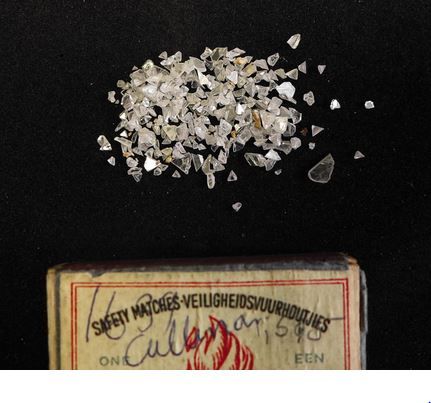
Gorelik's research proves that the 10 carats of unpolished chips could not possibly have been used in this pendant.
The Royal Collection has never commented on this pendant and chain, nor have I ever seen it worn by another royal lady. Queen Mary may have left it to the Queen or perhaps to someone else.
Because July 1918 at the time of the silver wedding anniversary was the first time it would appear that Queen Mary wore it in public, I suspect that it was an anniversary gift, possibly from the King.
I have noticed that after Queen Mary acquired a new jewel she tended to wear it several times in quick succession, and this jewel was no different.
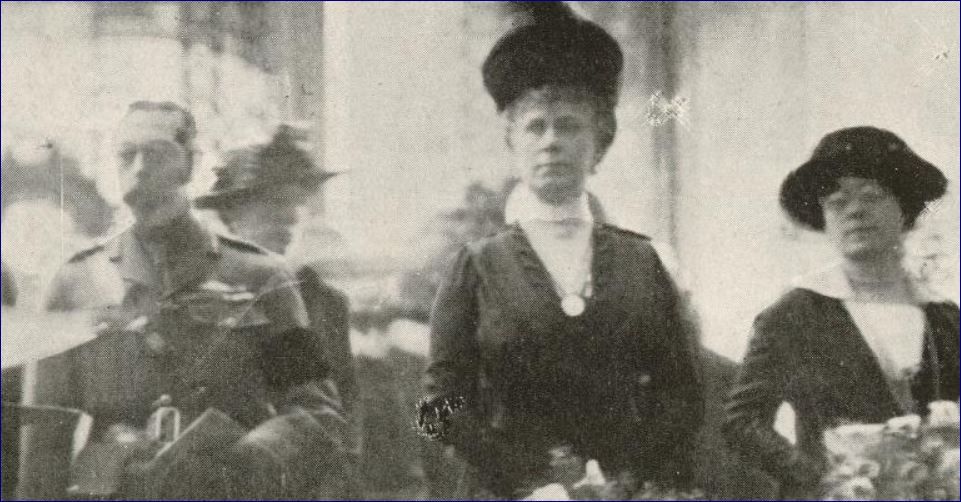
Franck has listed this as one of the mysteries, and it is. We do not know who inherited it, why or when Queen Mary acquired it, or even if it is made solely of diamonds. But I feel that the chances of this pendant and chain containing diamonds or diamond fragments from the Cullinan are virtually nil.
According to a pre-arranged agreement, the two largest diamonds, Cullinan I & II were to go to King Edward. The rest of the stones from the original Cullinan were retained by the Asschers as their fee for the work undertaken. General Botha of South Africa later decided that it would be best if South Africa purchased all the other stones, so that they could then be presented to Queen Mary and not fall into private hands. However, before this, Edward VII purchased the Cullinan VI from the Asschers as a private jewel for Queen Alexandra.
402
Responses « Back to index | View thread »
 on March 8, 2021, 3:32 pm, in reply to "
on March 8, 2021, 3:32 pm, in reply to "